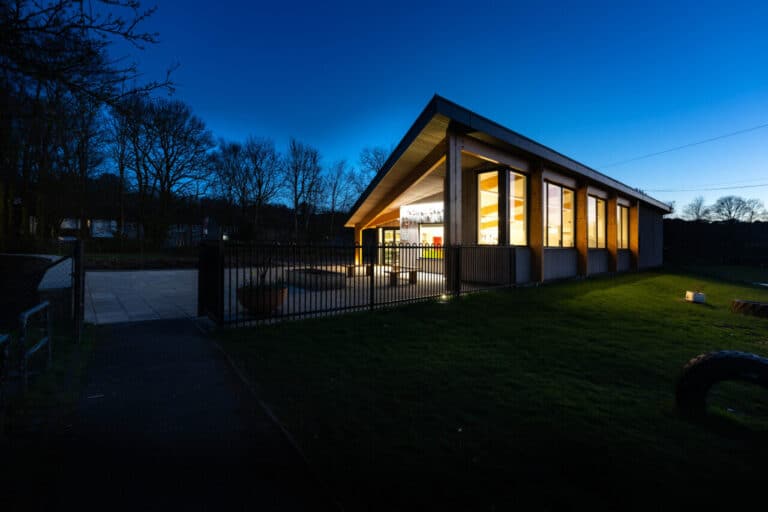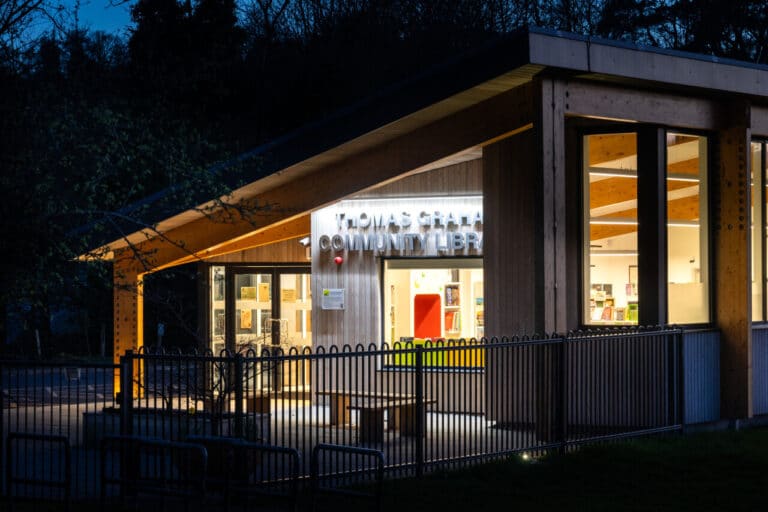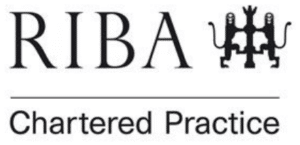




We were delighted to be chosen to design the new Thomas Graham Library, a replacement library for the village of Strathblane.
The new library sits adjacent to the primary school, on the same site as Strathblane’s previous library building, which was well used but housed in a 40-year-old portacabin building in need of replacement. We wanted to create an inspiring space, with great views of the Campsie Fells and a welcoming atmosphere. The new building also contains an expanded collection of books, a dedicated children’s area, accessible IT desks and meeting rooms.
The library is named after acclaimed 19th-century Scottish chemist Thomas Graham, whose legacy includes the essential text book Elements of Chemistry, Graham’s Law, and the beginnings of what became dialysis machines used daily in modern medicine. Thomas’s great nephew Angus Graham set this project in motion with an extremely generous donation of three quarters of the money required, with the remainder being raised from generous individuals and families in the local community.
The library site is very familiar to us, as some of us have lived in the village of Strathblane with children who spent many happy hours in the old library. So, the opportunity to design this building is something that we felt connected to and were delighted to be involved in.
The site’s position next to the school sets up a perfect relationship with these two key community buildings. Perhaps the most appealing aspect though is its physical location beneath the foothills of the Campsie Fells. It is these two key physical factors that have driven the form and orientation of the building and the architectural response is a linear, mono-pitched building with a large glass façade on its most public side. This glazing has the dual function of making the library interior very visible and inviting to school children and the community from outside, and also allowing users inside to enjoy the drama of the hill views. The impressive view is framed by the windows. It is an inspiring space to be in.
The dramatic overhanging roof forms shelter at the entrance to the library. It’s right beside the school entrance, which we hope will encourage parents to drop in and use the community facility as much as possible.
Energy efficiency was another important consideration for this public building, with the aim being for a carbon neutral outcome. We used a combination of measures to achieve this, including good building fabric, on site renewable energy generation though photovoltaic solar panels with battery storage and an air-source heat pump to power the underfloor heating system.
This library will be a great asset to its community. The building of a new library is a very hopeful thing to do. Public architecture projects such as this are so important and can provide inspiration and a feeling of collective ownership for all those who use them, enhancing the lives of the community they serve.
The building is also a success in terms of energy use, as our endeavours to build sustainably have paid off. It is classified as carbon neutral on its energy performance certificate.
The library is now open, and is proving popular.
Do you have a specific project idea that you’ve been thinking about? Feel free to reach out to us today, and we can initiate a conversation on how our services can assist you in bringing your vision to life.





















